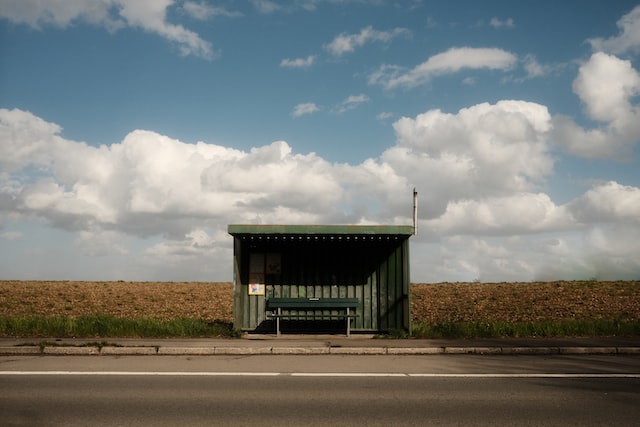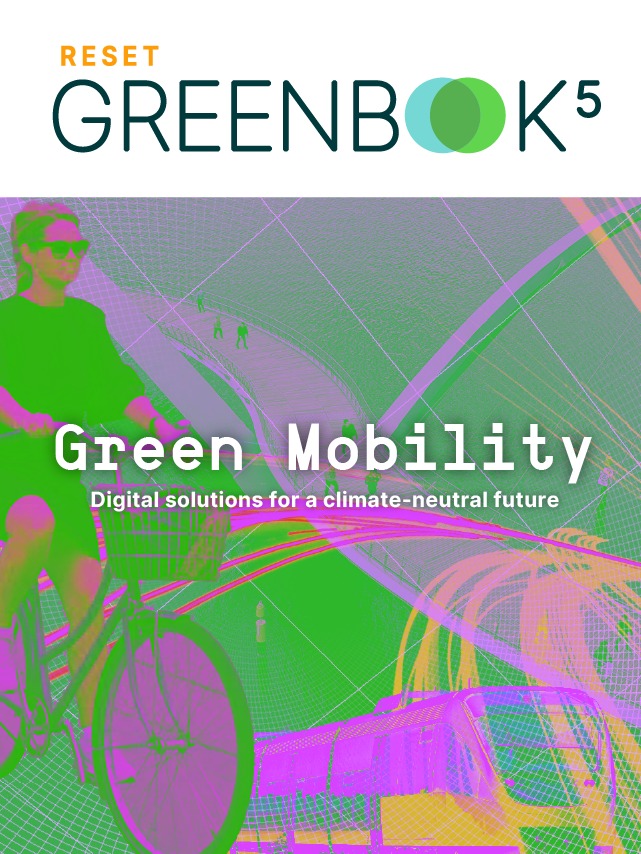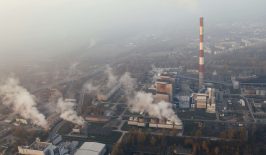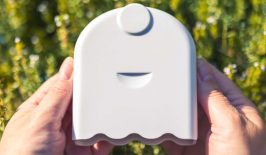In cities, owning a car has become a luxury, and public transport the norm. Passenger cars are a major polluter, accounting for 61 percent of total CO2 emissions from EU road transport, accounting for around 468.3 million metric tons of carbon dioxide (MtCO₂) in 2020. Although there is still an excess of cars in urban environments, reducing emissions by taking public transport is an easy solution. In rural areas though, owning a car is still often a necessity.
Going to work, a doctor’s appointment or simply getting groceries is often not just a 10-minute walk away and in many remote towns, public transport is often not up to scratch. On-demand shuttle services are now trying to close the gap between shared public transport and individual car rides.
The problem of the “last mile”
While our urban population worldwide is increasing, 43 percent of the global population still lives in rural areas, and 27 percent in Europe. This is a sizeable percentage of the population to still depend heavily on private cars for transport. In rural parts of Germany, for example, 90 percent of households own at least one car. This is a big contrast to cities, where almost half of the households manage without. Public transport operators have been incentivizing customers through attractive ticket prices and an ever-expanding transportation network. This has been successful for the most part, but where the mobility transition often fails is the so-called “last mile”. There’s no point in taking a train, to then hopping on a bus, only to then get stuck at a remote bus stop without a connecting service home. It’s the last step of the journey that forces many to still rely on taking a car all the way.
The occupancy challenge — empty rides
As public transport operators do their best to expand their network, there are some areas where there’s just not enough population density to make it economically viable. An entire bus line to cover the daily rides of four passengers still won’t be sustainable. Other solutions must be found.
In the EU, the car is the dominant mode of transport, with more than one car for every two people. The main reason for travel is the daily commute to work, which results in many almost empty cars driving the same distances daily. But, there’s hope — if these cars were to increase in passengers, their CO2 efficiency would increase significantly. Car occupancy makes a huge difference. It is a major factor driving efficient mobility and accounts for about 70-90 percent of observed GHG emissions intensities. To put this into perspective; the CO2 efficiency of a car with four passengers performs similarly to privately owned e-scooters. When we car-share, we can drastically improve the environmental impact of our journey.
The Inclusivity of public transport
What about everyone who isn’t physically able to drive a car? Are they able to access local public transport? Well, not always. Even if public transport operators are working on making public transport as accessible as possible, sometimes things go wrong; elevators don’t work, buses don’t have a ramp for wheelchairs or timetables are too complex or don’t cater to the needs of people with disability. This can lead to elderly people or people with disabilities having to be dependent on family members or caretakers to drive them around. New, more sustainable solutions should also add to people’s autonomy and social integration.
The wheels are turning – smart solutions through digitalization
Luckily, new initiatives are becoming active in various remote places, offering solutions at the intersection of individual mobility and public transport. Enabled through digitalization and fueled by community engagement, on-demand shuttle services are especially effective in rural areas of Germany, where no trains or buses are available or frequent enough to satisfy demand. They offer a flexible and inclusive alternative to cars that can be ordered via an app. Some also offer “Ridepooling”, sharing the rides with other passengers with a similar destination.
Green Mobility – Digital solutions for a climate-neutral future
Autonomous vehicles, e-mobility, AI-controlled traffic planning, new modes for moving from A to B — what will the mobility of tomorrow look like?
We present the digital solutions being proposed for climate-neutral transport and logistics and discuss the new challenges of “digital mobility” in this dedicated special feature.
One of the largest on-demand projects in Europe is the “On-Demand Mobility for the Frankfurt/Rhine-Main Region” project (available in German). It is intended to reduce CO2 emissions in public spaces by filling gaps in public services with zero-emission vehicles. It is the first time a project of this kind has been implemented across several regional authorities and with uniform standards in Germany, making it a lighthouse project for many more initiatives to follow.
So how does it work? Let’s say you want to ride from home to the city to run some errands. You can choose to either book by phone or download the RMV On Demand app. After creating a profile, you select whether you want to travel right now or at a later time, enter your start and end destination, book your route, and you’re ready to go! Payment works directly over the app and the pricing is based on the regular public transport tariff with a small convenience charge on top. To save emissions, the software will add other passengers to your trip who want to travel a similar route as you.
Another similar service operating in various regions across Germany is “CleverShuttle”. The company provides the planning, set-up, and management of shuttle service projects and the software to coordinate rides. Their projects aim to work with local authorities to complete existing public transport with sustainable, flexible, on-demand shuttles.
In the German town of Lübeck, the initiative “In2Lübeck” focuses particularly on the participation of citizens to develop a service that is as user-centred as possible. Their shuttles have been operating for a few years now and have become integral to local mobility. Through workshops, surveys and dialogue events, the project is now aiming to go beyond the shuttle service and contribute to a big shift in the transportation landscape of the city.
But how effective are these services?
A study in Hamburg, over the course of a few years, has shown that on-demand shuttle services could effectively reduce traffic, especially in contrast to taxi services, which add to traffic through empty rides. In addition to public transport, they can make a big demographic of people more independent of their cars, leading to fewer cars per household needed.
A big focus must be put on making the social and sustainable benefits an integral feature of on-demand shuttle services. Using e-cars and offering ride-pooling rides for more people could be effective measures to avoid them into a taxi-replacement and make them attractive to new demographics. Especially elderly people have a big potential to benefit from these services. What might pose a challenge is making these services accessible to this group, which might not have the necessary digital skills to book or pay for rides online.
What seems to be key for on-demand services to become an attractive alternative to the private car is a well-implemented integration into traditional public transport. The funding of flexible on-demand services as part of public transport is a challenge many smaller operators are still struggling with, especially when it comes to digitally managed services. The legal and financial frameworks still need to be developed to move out of an experiment and project-based phase and make these initiatives scalable and increase their effectiveness.
They currently still enter a legal grey area when they become part of the public transport system and then have to rely on application and approval under the experimentation clause of the “Passenger Transportation Act”. The challenge is to get an amendment off the ground that would ensure greater legal certainty for innovative digital on-demand services. On the financial side, new funding frameworks must be found to provide federal and regionalized funds for local projects. One proposal is for example a “one-percent fund“, with which regionalisation funds can be tendered for these offerings by the responsible authorities and responsible purchasers.
There’s still a long way to go for shuttle services to become a well-integrated part of rural transportation. But many projects are leading the way and showing the potential of connecting digitally to locally improve a global sustainability challenge. If executed well, they can be a very effective solution and even become a catalyst for people to reconsider their need for a car.











